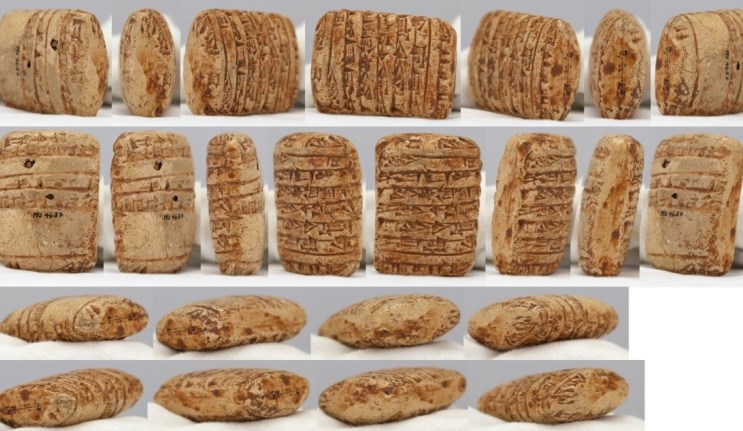
FEATURES
Holding the past in your hands
For students, holding a piece of the past in their hands can be a powerful learning experience – one that has traditionally been denied because of the fragility and value of most archaeological remains.
Macquarie University has pioneered a new technique that allows superb replicas of artefacts to be created inexpensively allowing students, researchers and passionate amateur historians to engage with objects in ways that were not possible in the past.
The replica cuneiform tablet shown in the image below was created using a combination of best-of-breed engineering-based laser scanning, with macro-still photography under controlled lighting, to produce an outstanding digital replica at scale. The model was then 3D printed using the latest colour printing technology to show what is possible with current technology.
The terracotta tablet demonstrates the intricacies of cuneiform, and how much information could be recorded in a small space. Dated by its inscription to Mesopotamia in the second millennium BCE, the artefact records the distribution of barley to three workers: Lugal-usur, son of Ur-Eanna; Lu-Nindara, son of Lu-pada; and Lu-isa, son of Ur-Enki. The tablet also records the workers receiving their grain allocation at the Temple of Nindara, in the month of Buramas (March/April) in the year after the city of Kimas was conquered.
However, the artefact on which this replica is based, in fact, a superb fake purchased unwittingly by Macquarie University in 2011 from the Mark and Susan Marshan Collection. Despite its certificate of authenticity and impeccable provenance, scholarly investigation revealed it has clones in the British Museum, Cugnin collection, France, State Hermitage Museum, St Petersburg, University of Pennsylvania and the World Museum Liverpool dating back to the beginning of the twentieth century. The faux tablet is a classic example of the challenges faced by experts and students in authenticating artefacts.
Today, technology is allowing the creation of high-quality replicas: Macquarie’s pioneering expertise in semi-automated 3D scanning, large area and site scanning, photogrammetry, and medical imaging technology including MRI and CT scanning for archaeological objects has not only allowed ancient secrets to be revealed, but also created new learning and teaching, research, and outreach opportunities in this emergent digital media field.
Find out more about Macquarie’s Ancient History research program and the Museums of Ancient Cultures.
So what’s the difference between a replica and a fake? Can you be sure your replicas won’t be sold as authentic a hundred years from now?